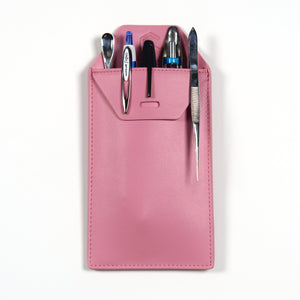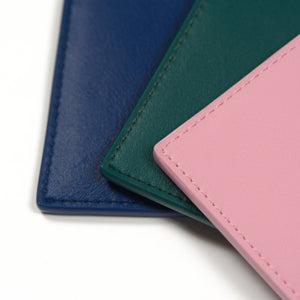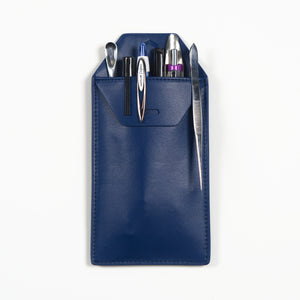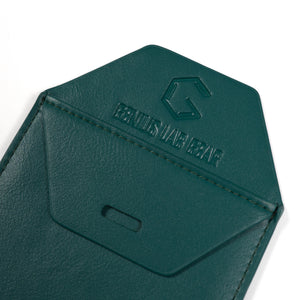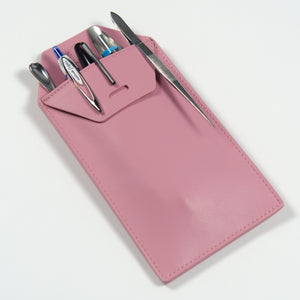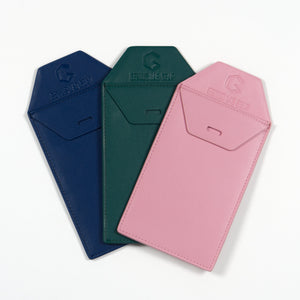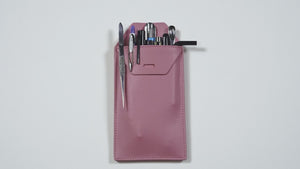Your Cart is Empty
Menu


Lab Coat Safety & Care Instructions
Everything you need to know about your new lab coat
To extend the life of your new lab coat and to keep you safe, please read the important information below.
-
The Louis and Curie coats are 100% uncoated cotton and all-metal snaps, which is accepted in most standard laboratory environments including introductory chemistry and biology lab classes. Please check with your lab safety officer for compatibility.
100% cotton provides better protection against flames than polyester or poly-cotton mixtures because polyester will melt to your skin and prevent emergency lab coat removal.
100% cotton is not “FR”, “flame-retardant” or “fire-proof”, and will burn slowly if exposed to intense flames. If your lab requires “FR” lab coats, get on our email list for our future release with flame retardant materials.
If your lab coat starts charring or catching fire, immediately remove it and extinguish. Charred or damaged lab coats should no longer be used.
-
Most lab coat materials, including 100% cotton, absorb strong acids and may develop holes from exposure due to corrosion. Always wear a neoprene, rubber, or PVC apron and long acid-resistant gloves on top of your lab coat when handling strong acids.
-
The Curie and Louis lab coats may temporarily repel water-based liquids with high surface tension due to its tight weave, but most liquids will eventually absorb into the cotton.
Cotton is breathable and absorbant, so polyester lab coats are typically a better choice to provide a sterile fluid barrier against blood, pathogens, and other biological liquids.
- For BSL-1 work, autoclaving before washing is recommended but not always necessary if there were no known contaminations or spills. Check with your institution.
- For BSL-2 work, autoclaving is required before washing your lab coat.
- If a known or suspected biological agent contamination/spill occurs all lab coats should be autoclaved (regardless of risk group assessment level or biosafety lab level).
- Biologically contaminated lab coats that are also contaminated with chemical or radioactive substances should not be autoclaved. This can cause dangerous chemical reactions or explosions.
-
If a significant chemical spill occurs on clothes, or if the spilled substance is particularly toxic, corrosive, or persistent (non-evaporating), the lab coat must be disposed of according to hazardous waste disposal standards and will not be accepted for washing.
Contaminated lab coats should be thrown away and should not be washed if they have been contaminated by:
- Corrosives or strong acids
- Materials that can flow through Nitrile gloves (for example, organometallics such as methyl mercury); or
- More than 250 milliliters of:
- Carcinogens
- Teratogens
- Toxic substances with an LD50 of 50 mg/kg.
A coat can be professionally washed and reused if the spill does not meet any of the above conditions.
-
- If handling biological materials, consult with your lab's handling guidelines before washing. Otherwise you could spread dangerous toxins or pathogens into the environment or contaminate other clothes.
- Home washing is not recommended if your lab coat may contain chemical or biological residue.
- Unbutton the belt buttons, snap together the snaps, and zip all zippers up before washing. Empty the pockets!
- Turn it inside-out to prevent pilling and damage to the outside.
- Do not wash together with regular clothes.
- Wash with similar colors only.
- Spot treat with normal detergents as necessary, but be careful of chemical reactions from chemical residue.
-
- Wash in HOT water with regular detergent. 60C (140F) is recommended for most cases. Water up to 95C (203F) may cause excessive shrinkage and wear of the fibers.
- Use the "heavy" or longest cycle for the best results.
- DO NOT use fabric softener. This can increase flammability.
-
- Hang dry if possible, or dry on the lowest practical temperature setting.
- Cotton can be dried on HOT settings but shrinkage of up to 5% can occur.
- Our cotton is more wrinkle-resistant than most cotton but may still require ironing after drying.
- Iron on medium-hot setting. Do not iron the knit cuffs or plastic buttons.
-
- Our white lab coats may be bleached without affecting the color.
- Chlorine bleach will not affect the stainless steel snaps and there is no fabric coating to worry about, but chlorine bleach may decrease the lifetime of the lab coat.
- Use non-chlorine bleach whenever possible.
-
No, these lab coats are not currently CE certified. We plan to do this in the future, but the regulations are extremely costly for a small business to overcome.
-
The Louis and Curie lab coats are not FR rated. We have access to FR rated textiles and may make this in the future. Get onto our email list for that preorder announcement!
-
We currently do not, sorry. We realize this is a barrier for many labs and would like to address it if the lab coat line grows in the future.
-
The lab coats will generally survive autoclaving but it will reduce the lifetime of the garment.
- Collect lab coats in a lidded container with a Biohazard label, lined with an autoclave bag and labeled with contents and date.
- Autoclave in a clear bag or well-labeled opaque bag. You don't want anyone to mistake this bag for waste!
- Decontaminate the lab coats on a solid or pre-vac cycle in the autoclave. Use a Chemical Integrator (CI) for load verification.
- After the autoclave, lab coats should be laundered by a professional service whenever possible.
Staying safe with your lab coat
Caring for your lab coat
Other common questions
$13.45 - $32.85$40.35
It's time to bring Pocket Protectors back. Our fresh, modernized design replaces flimsy white PVC with sturdy double-stitched and bonded faux leather in refreshed colors to add a splash of personality to your shirt or lab coat at work.
Be the first to hear
Subscribe to our updates of new colors, fits, pre-orders, Beta Testing, and our helpful monthly newsletter.









